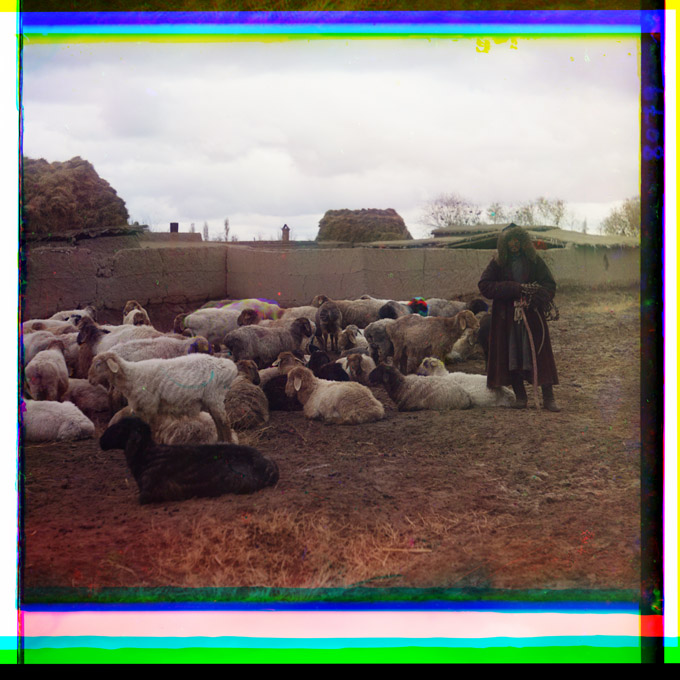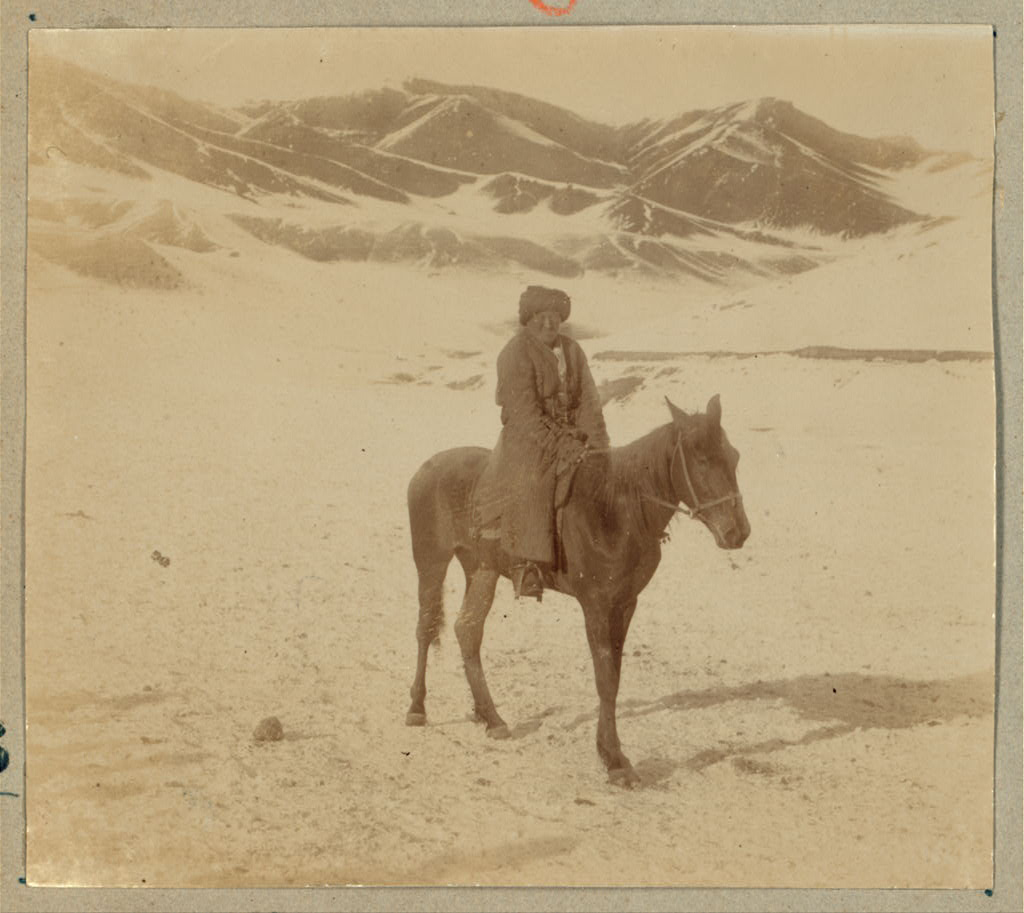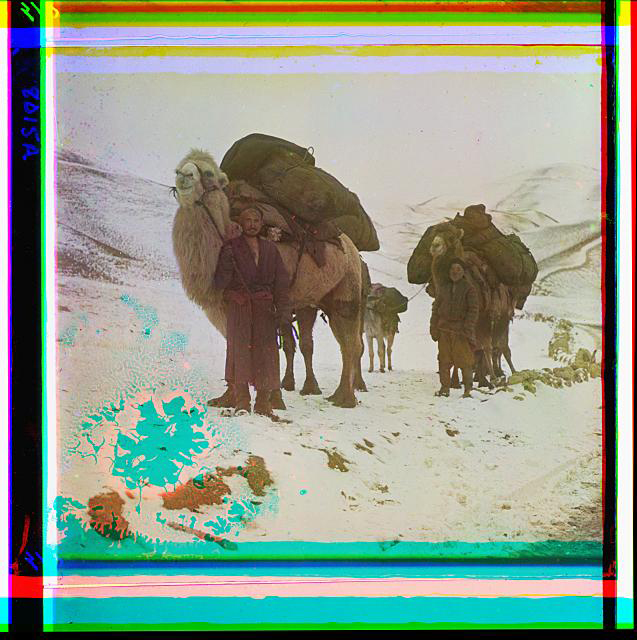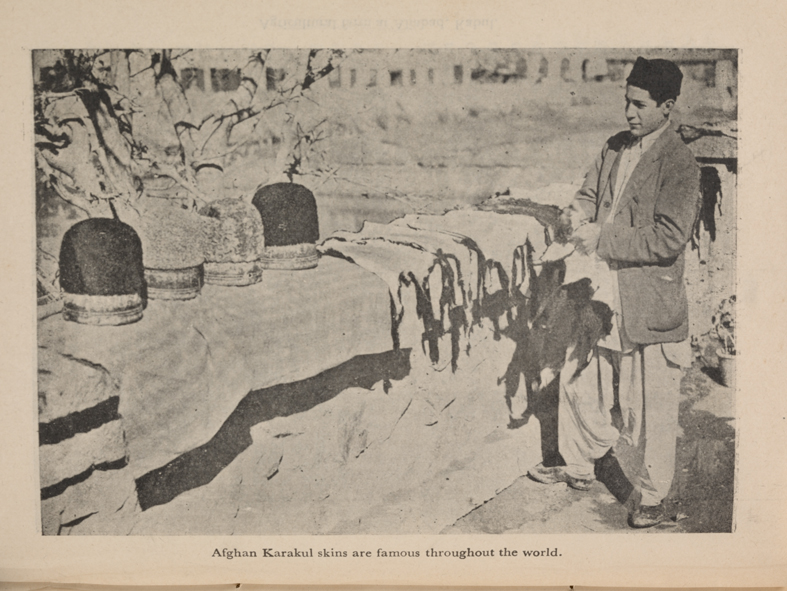A few years ago a group of fur rugs appeared in the collectors market.

Probably sourced in Afghanistan, they raised a lot of questions as they were not woven but consisted of various fur pieces sewn together.1 Moreover some parts were dyed in the way Uzbeks and Arabs from Afghanistan dye their polychromatic julkhyrs and some other trappings. Another curious and unusual feature were the presence of threads sewn all along the back of the rug and a horn motif was even visible in the corners of some rugs.
Their precise and definitive origin has never been clearly identified but it is highly probable they were used by Kirghiz populations inhabiting the Wakhan corridor in Afghanistan. The widespread use of fur among the Kirghiz population and the presence of the little horns seems to indicate this.
They are difficult to date but the presence of synthetic colours among the embroidered threads prove they can not be older than the last quarter of the 19th century. Synthetic dyes were already widespread among Kirghiz weavers in the 19th century. Some Kirghiz rugs collected in the Wakhan corridor by Russian expeditions in the 1880’s were already dyed with the poor fugitive red dye for which Kirghiz rugs and trapping are famous.
The Kirghiz were already well known a few centuries ago in international fur trading.2 They use furs as a blanket, of both sheep and camel origin, and they even produce warm and thick fur topcoats they call « Tôn ». Pictures taken by Sabrina and Roland Michaud in the Wakhan corridor in the 70’s show raw furs used as packaging for camels and covers on the back of horses.3
Dr Nazif Shaharani, author of The Kirghiz and Wakhi of Afghanistan, confirmed the use of such furs as rugs among the Kirghiz and Wakhi people in the Wakhan and Iktamish districts of the Afghan Badakhshan province and called them Postak. He did not however confirm the presence of fur dying processes among these populations and even raised a doubt about the genuine origin of the dyed pieces.4

Quilted undyed fur rugs with very similar rectangular designs are also used among Siberian Yakoutes tribes who are of Turkic origin and

historically fur counsumers, they are also traders like the Kirghiz people. 5
Postak, fur covers and blankets, are widespread in the Kabul market and they are allegedly used even in the Pashtun Southern provinces of Afghanistan. They are not quilted but simple pieces of fur. In Wardak Southern province, they are called by the simple word of pashmani (from « pashm », the Persian word for wool). In these areas both Pashtun villagers and semi-nomadic tribes (« Kutchis ») have furs but consider them too costly to be used as mats. 6 It is right that Durani Pashtun are mainly goat breeders and sheep skins are highly prizedamong them. They are used as covers during the night or even folded on the shoulders when seated in either the tent or the house.
Hence it is possible these quilted and dyed furs would have a twofold purpose and could be also used as shoulder covers which could explain the presence of decorative thread on the skin part. A similar practice has been noticed on a mummy found by scientists in Subeshi, not far from Turfan, and dated from the warring states period. 7
Otherwise use of quilted furs is not widespread in the world but one can also notice the similar use of quilted fur mats in Tchad and Mauritania where they are called Khlef, Khlief, Farou and Farouw. 8 And curiously the famous french artist and decorator Armand-Albert Rateau created a very similar collection of fur rugs for the company Lanvin Couture early in the 20th century. 9 At this time occidental artists and decorators often took inspiration among ethonological artifacts from colonies. It is possible Armand did the same.
To summarize one can say that use of furs is a common practise in Central Asia but such quilted furs with both embroideries and unusual dying processes are virtually unknown… They could be the result of a limited and creative attempt by a group of women from the same family. This would explain the limited number of existing pieces, about a dozen, and the fact they appeared all at once in the market…
Thierry Girard

1 - J.Wertime, Hali 100, 1998 p.86
2 – R .B Serjeant, Islamic Textiles, : material for a history up to the Mongol conquest. Beirut 1972 p.p.209
3 - Roland Michaud et Sabrina Michaud, Caravans to Tartary New York 1978
4 - Dr Nazif Shaharani, personal communication, 2009
5 – V.Gorbatcheva & M.Federona, L’art de Sibérie, Parkstone Press 2008p.191 & 226
6 - Rafiq Sharifi, personal communication, 2008
7 – J.P Mallory & V.Mair, The Tarim Mummies, London 2000 p.25, pl.VI
8 - http://www.quaibranly.fr, items N° 71.1938.48.1, 71.1957.82.117 & 71.1969.70.1
9 – F. Olivier-Vial & F.Rateau, Armand Albert Rateau, les éditions de l'amateur, Paris, 1992, p.127
 A shepherd Circa 1910 with long coat and sheepskin lining in the hood. Complete with rolled up rope and tools of the trade. The early studio photograph of the Afghan horse traders gave us a view of Afghan sheepskin covers in use in the 1860's. The shepherd's coat indicates the requirement for an all weather solution, the afghan horse traders no doubt would have faced similar circumstances,their long sheepskin covers providing a warm alternative.
A shepherd Circa 1910 with long coat and sheepskin lining in the hood. Complete with rolled up rope and tools of the trade. The early studio photograph of the Afghan horse traders gave us a view of Afghan sheepskin covers in use in the 1860's. The shepherd's coat indicates the requirement for an all weather solution, the afghan horse traders no doubt would have faced similar circumstances,their long sheepskin covers providing a warm alternative.








